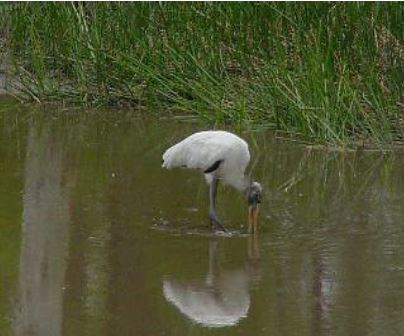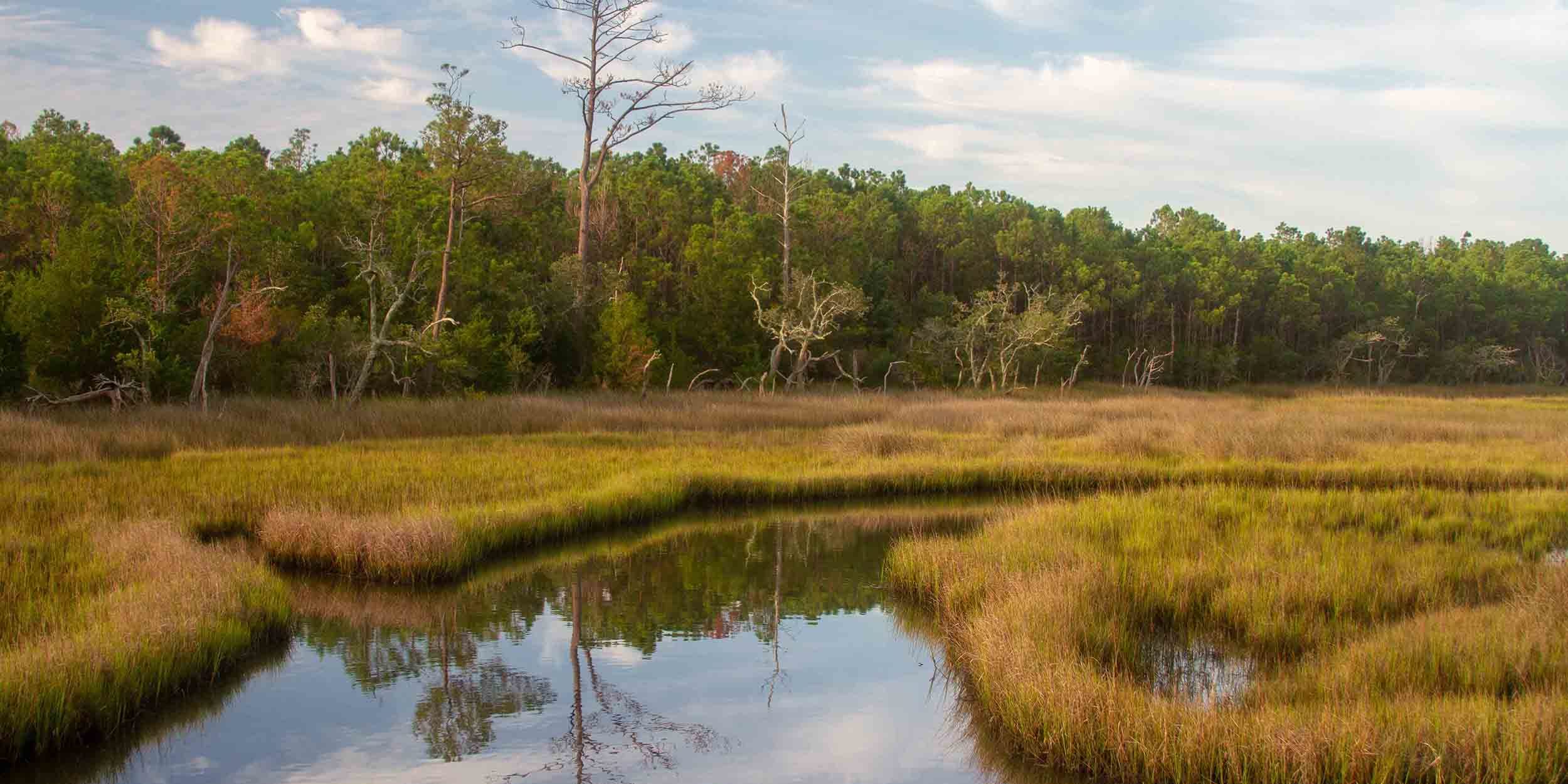More effective mitigation for unavoidable wetland losses from transportation projects in Florida is being achieved through a unique programmatic mitigation approach developed by the Florida Department of Transportation.
The state’s “Revised Mitigation Statute,” in combination with Florida’s Uniform Mitigation Assessment Method and a new General Permit for FDOT issued by the U.S. Army Corps of Engineers, have provided a framework for the programmatic mitigation approach.
Background
Given Florida’s geology, FDOT construction projects often required the unavoidable loss of wetlands. In 1996, the Florida Legislature passed a law (the Mitigation Statute) to standardize and expedite situations where mitigation was required to compensate for the unavoidable loss of wetlands from FDOT’s projects. The 1996 statute required FDOT to pay the appropriate Water Management District (WMD) a fee established by the statute per acre affected by the FDOT project. With the WMDs tasked with protecting and managing their water resources, funding from the mitigation budget of an FDOT project would allow the WMDs to achieve their water resource protection and management effort, thereby mitigating the loss of wetlands from the roadway construction.
The law was forward thinking for its time. However, important portions of the law became outdated, and in 2014, the Florida Legislature passed revised language designed to give FDOT more flexibility to obtain full value for their wetlands mitigation expenditures (Title XXVIII, Chapter 373, Section 373.4137), commonly referred to as the “Revised Mitigation Statute.”

Florida DOT’s programmatic approach for wetlands benefits species such as the wood stork. Photo: FDOT
Benefits/Features
The “Revised Mitigation Statute,” passed in 2014, has a number of innovative elements.
- The Revised Mitigation Statute requires FDOT to consider all mitigation options that meet federal and state requirements, thereby complying with the 2008 mitigation rule issued by the U.S. Army Corps of Engineers and the Environmental Protection Agency. While working with the WMDs remains an option, FDOT may also consider the use of private mitigation banks providing FDOT with the ability to seek the most cost-effective option. FDOT has substantially reduced its mitigation costs and receives greater value for each wetland mitigation dollar.
- WMD deliverables and responsibilities when using FDOT funds are now more explicit, improving accountability. Now, when WMD’s receive mitigation funds from FDOT, they must prepare detailed plans for project-specific wetland mitigation areas enabling identification of specific wetland mitigation funded through each project’s environmental mitigation budget.
- The Revised Mitigation Statute enables advance mitigation. FDOT forecasts the wetland impacts associated with their three-year Transportation Improvement Program (TIP) in an “impact inventory.” FDOT may then purchase wetland mitigation credits, based on the forecast in the impact inventory, in advance of more detailed project development. If there is no mitigation bank in the area, the WMD may receive FDOT funds to plan and develop a mitigation bank to accommodate the mitigation requirements of future FDOT projects. The amount of mitigation provided by the WMD is then deducted from FDOT’s future mitigation requirement. This program encourages WMD’s to think of FDOT as a customer and shape their water resource plan to coordinate with the development of the state highway system in the area. Additionally, the FDOT forecasts of wetlands loss help the wetland banking industry plan for future demand.
Wetland Functions Considered
The Florida Department of Environmental Protection’s (FDEP) continued development of Florida’s Uniform Mitigation Assessment Method (UMAM) and its inclusion by FDOT in the Revised Mitigation Statute helped further accountability and accuracy. This process provides a scientific basis for adjusting the gross acreage of wetlands impacted by the specific functions provided by the affected wetlands. UMAM was adopted by all state agencies and the Corps.
With the UMAM analysis substantiating the existing functions of the wetlands affected by roadway construction, FDOT is able to coordinate with the Corps and FDEP on appropriate mitigation quantity, and thereby paying for only what is needed to mitigate the loss of wetland function.
Collaborative Effort Provides Ongoing Dividends
The “Revised Mitigation Statute” resulted from a fortunate confluence of knowledgeable stakeholders and a state legislature focused on efficiency, expedited project delivery, and an approach to mitigation that best serves the people of Florida. The effort was led by Marjorie Kirby and Xavier Pagan in FDOT State Environmental Management Office and Kathleen Toolan of the FDOT Office of the General Counsel with FDOT leadership support.
The rewrite of the Mitigation Statute involved intense negotiations involving FDOT, representatives of the mitigation banking community and FDEP and WMDs. With stakeholder unity, the revised statute sailed through the legislature because it respected the interests of all stakeholders.
The trust that was developed among stakeholders through the passage of the Revised Mitigation Statute has continued to benefit Florida as the various stakeholders continue to work directly to improve approaches to roadway project development and permitting. For example, seeing the opportunity to improve the efficiency of the permit process, stakeholders collaborated to develop a Regional General Permit from the Corps of Engineers for FDOT projects. The General Permit was issued April 8, 2015, and was designed to include the Revised Mitigation Statute. It also incorporates such features as:
- Integration of NEPA and Clean Water Act Section 404 requirements; and
- Addressing projects with five or less acres of fresh water wetland impact per linear mile, , excluding tidal wetlands, up to a limit of 10 miles of roadway (this category of project includes a large proportion of FDOT construction); and
Future Activities
FDOT continues to push ahead with proactive, programmatic approaches to wetlands as well as biological impacts. For example:
- New uses for UMAM are being developed, in coordination with FDEP and the Florida Fish and Wildlife Conservation Commission (FWC) to enable its use for species and habitat mitigation.
- New programmatic agreements are being developed, leveraging the collaboration developed among FDOT and the resource managers and FDOT has a U.S. Fish and Wildlife Service staff member working exclusively on programmatic agreements. The first species to be addressed are freshwater mussels.
- Technical specifications are being updated to include standard environmental minimization and mitigation measures. Presently documents enumerate environmental mitigation measures, but having standard environmental construction conditions for contractors will help ensure a uniform approach to activities across the state.
Florida is now benefiting on several fronts from the collaborative approaches that have been and are being developed to address the unavoidable wetlands and biological impacts of road construction, according to the state DOT officials. This is the result of a successful public-private partnership that has helped build trust and communication pathways to clarify, simplify and focus, laws, coordination and procedures to develop better outcomes for the environment and the users of the transportation system.
For more information on FDOT’s wetland mitigation approach, contact Marjorie Kirby, FDOT Environmental Programs Administrator at [email protected], or Xavier Pagán, FDOT Natural & Community Resources Administrator, at Pagan, [email protected], State Environmental Management Office, Tallahassee, Fla.

